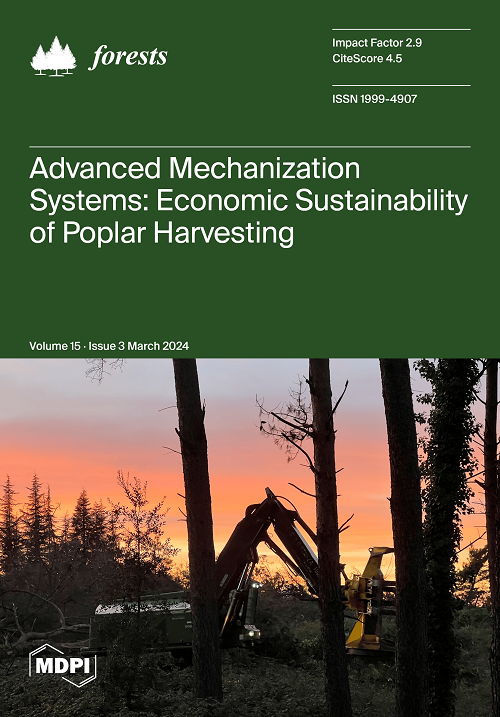Assessment of Climate Change and Land Use/Land Cover Effects on Aralia elata Habitat Suitability in Northeastern China
IF 2.5
2区 农林科学
Q1 FORESTRY
引用次数: 0
Abstract
Climate change and land use/land cover (LULC) change have received widespread attention as the two main factors contributing to the shrinking of plant habitats. However, the different effects of these factors on understory economic tree species are not clear. This is not conducive to the conservation and exploitation of forest resources. Here, we used species distribution modeling to predict the extent to which climate change and LULC change will affect changes in suitable habitats for A. elata under different scenarios in the future. The results showed the suitable habitat to be located in the Changbai Mountain Range in northeast China. The current area is 110,962 km2. The main variables that affect the suitable habitat are annual precipitation, LULC, slope, and mean diurnal range. The percentage contributions are 31.2%, 16.8%, 12.8%, and 12.3%, respectively. In the 2070s, the area of high-quality (moderately and highly) suitable habitat was reduced by an average of 6.05% when climate alone changed, and by an average of 10.21% when land use alone changed. When both factors changed together, there was an average decrease of 9.69%. When climate change and land use change acted together, the shrinking area of suitable habitat did not suddenly increase. These findings help to identify potentially suitable habitats for A. elata and to carry out conservation and exploitation efforts to ensure sustainability.气候变化和土地利用/土地覆盖对中国东北地区旱金莲栖息地适宜性的影响评估
气候变化和土地利用/土地覆盖(LULC)变化是导致植物栖息地缩小的两个主要因素,因此受到广泛关注。然而,这些因素对林下经济树种的不同影响尚不明确。这不利于森林资源的保护和开发利用。在此,我们利用物种分布模型预测了在未来不同情景下,气候变化和土地利用、土地利用变化和气候变化对A. elata适宜栖息地变化的影响程度。结果表明,适宜栖息地位于中国东北部的长白山脉。目前的面积为 110 962 平方公里。影响适宜栖息地的主要变量为年降水量、土地利用、土地利用变化、坡度和平均昼夜温差。这些变量的贡献率分别为 31.2%、16.8%、12.8% 和 12.3%。在 2070 年代,当气候单独发生变化时,高质量(中度和高度)适宜栖息地的面积平均减少了 6.05%;当土地利用单独发生变化时,高质量(中度和高度)适宜栖息地的面积平均减少了 10.21%。当两个因素同时发生变化时,平均减少了 9.69%。当气候变化和土地利用变化共同作用时,正在缩小的适宜栖息地面积并没有突然增加。这些发现有助于确定A. elata的潜在适宜栖息地,并开展保护和开发工作,确保其可持续发展。
本文章由计算机程序翻译,如有差异,请以英文原文为准。
求助全文
约1分钟内获得全文
求助全文
来源期刊

Forests
FORESTRY-
CiteScore
4.40
自引率
17.20%
发文量
1823
审稿时长
19.02 days
期刊介绍:
Forests (ISSN 1999-4907) is an international and cross-disciplinary scholarly journal of forestry and forest ecology. It publishes research papers, short communications and review papers. There is no restriction on the length of the papers. Our aim is to encourage scientists to publish their experimental and theoretical research in as much detail as possible. Full experimental and/or methodical details must be provided for research articles.
 求助内容:
求助内容: 应助结果提醒方式:
应助结果提醒方式:


